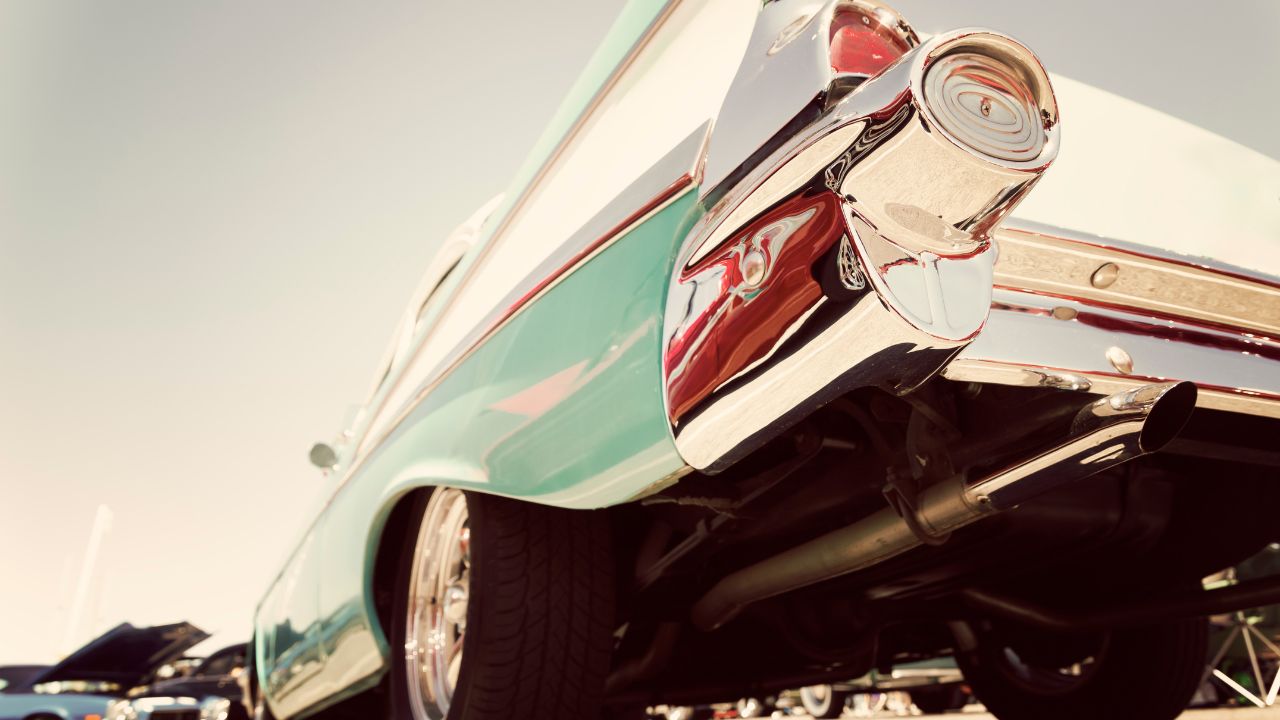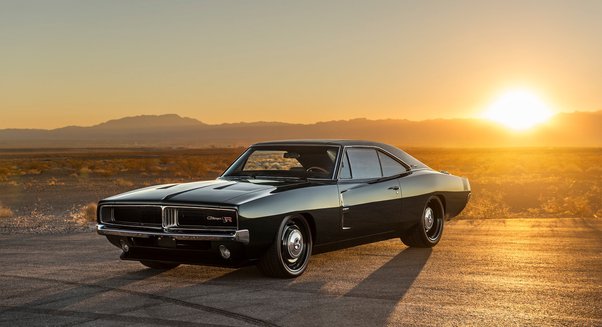
The Paris Motor Show saw the launch of the Citroen DS. It stood out against its competitors because of its wide single-spoke steeringwheel and large glove box. The DS quickly became popular, with 800 bookings in its first hour and more than 79,000 during the whole show. The Citroen DS commanded a staggering 940,000 francs. Before receiving delivery of the car, buyers were required to pay a deposit equal to 80,000 francs.
Citroen
Citroen's flagship sedan, the DS (design code DS), was introduced in 1973. It was powered with a 2.3-liter engine, which produced 115 horsepower carbureted and 128 HP when equipped with fuel injection. It was capable of achieving a speed of 118 mph on French highways. Citroen developed a replacement for DS in the 1970s. Project L was a more aerodynamic design and shared visual cues from the mid-level GS. Citroen opted against making another car before the DS was no longer available.

DS
The Citroen DS has a rich history and is a popular choice for people who are looking for a classic car. The DS first appeared in 1958. After its discontinuation in 2010, it was relaunched as a separate luxury model. It is one of the most desirable cars ever made and sells for a premium at auctions all over the world. It is also one of the most beautiful cars ever made.
DS Pallas
From 1955 to 1975, the DS was a French automobile icon. It was famous for its innovative technology, aerodynamic design, and other unique features. It also had hydropneumatic suspension that allowed for a more comfortable ride. The DS Pallas was the most expensive model in the range. It featured a separate glass in the rear compartment. Although the DS was no longer produced, Citroen has continued to make some nice cars.
DS Hydropneumatic suspension
The Citroen DS Hydropneumatic suspension system first made its debut on the revolutionary DS in 1955. Paul Mages designed the suspension system. It combines high-pressure pipework and hydraulic springs with an independent rear suspension. Eventually, the hydraulic suspension system would be limited to high-end cars such as the Mercedes-Benz E-Class and Audi TT, and then, by the late 1950s, it was being used on many different models.
DS Techeetah
Formula E introduced the DS Techetah for 2018. Since its introduction in the series in 2003, the DS won every race. The DS was also used to supply the Techetah in 2019. However, the team's partnership with the DS paid off in the driver's championship and the teams title. The DS Techetah was named World Touring Car Championship champion for the 2018/19 year.

DS Techeetah won both the drivers' and teams' championships
The Citroen DS Techeth placed fourth in the first season's FIA Formula E Championship. But, the team quickly moved up the Teams' standings. Since 2003's introduction, the French manufacturer has been dominant in the series and has won every race ever since. In the 2018/19 season, DS switched to supply the Techeetah, which won the drivers' championship with Jean-Eric Vergne. This partnership worked out well, as the Citroen DS Techeetah finished first and second in the Teams' standings.
FAQ
What qualifications are required to become a truck mechanic
You don't have formal qualifications for this role, but you are very experienced working on trucks and engines. Your knowledge is valuable as you are able to quickly diagnose problems and work efficiently.
Also, your knowledge of diesel technology will be a benefit as you can help us understand which parts are needed for our vehicles.
What qualifications do you need to be a mechanic?
To become a mechanic, you'll need to pass a series of exams. These include:
-
A general knowledge test
-
A practical exam
-
An apprenticeship test
These tests are intended to make sure you have a solid understanding of the basics of mechanics before you can start your career as a mechanic.
Once you've passed these tests, you'll be eligible to work as a mechanic. You will still need to complete an apprenticeship. This will require you to learn the trade.
To be able to repair vehicles, you'll need classes or workshops. Experienced mechanics will also be required.
You'll need a high level of concentration and attention to detail if you want to succeed as a mechanic. You'll need to pay close attention to every aspect of vehicle repairs.
You'll need patience and persistence to become a successful mechanic. If you don’t love to follow instructions, this may not the right career path.
However, if you love cars or enjoy working on them, you might be happy in this field.
Is it really worth becoming a mechanic.
The answer depends on what you are looking for in life. If money is your goal, then you can answer "yes". But if you are searching for meaning and purpose, then you should not answer this question.
If you don't have any mechanics skills, then there's no point getting into it because you'll just end up wasting time. It's not going to make you rich. It won't make you famous. And it's unlikely to change your life.
You would need to spend years learning how to do everything properly. This would mean that you would have to pay someone else for your car's repair. It's the reason most people don't bother. They find something else to do.
To sum up, if you want to earn lots of money then go ahead. You can't live a meaningful existence if your goal is to make a living in the mechanic's business.
What are the requirements for an automotive technician?
High school graduation or GED is required with excellent grades in English and math. It is also necessary to be able both to read and to write. Before you can start working, you will have to pass a written exam and take a series practical tests.
How long is an apprenticeship for an automotive mechanic?
It takes approximately three years to complete an automotive mechanic apprenticeship. This includes two year at school as well as two years as an apprenticeship. The first year is dedicated to learning the theory and practical skills of the trade. During this time, you'll also learn how to use tools safely and efficiently. You'll spend the second year in on-the-job training, where you will gain experience in various trades. These are also the times you can attend formal courses.
The last year of the program is dedicated to gaining certification and qualifications in the field. These include NVQs or National Vocational Qualifications. These are earned after passing exams that cover specific topics in the industry. The HNCs (Higher National Certificates), on the other hand, cover general subjects like customer service and management. City & Guilds certificates may be available for those who are interested in becoming qualified in specific trades.
Statistics
- According to the BLS, total auto technician employment is expected to exceed 705,000 by 2030. (uti.edu)
- There were 749,900 jobs available for automotive service technicians and mechanics in 2016, which is expected to grow by six percent through 2026. (jobhero.com)
- 52% of Mechanics in the United States think their salaries are enough for the cost of living in their area. (indeed.com)
External Links
How To
How to diagnose your vehicle properly for repair
To determine if your car needs repairs, you should first look at the symptoms that your car presents. Next, you can follow these steps in order to diagnose your car.
-
Check engine lights. Inspect the dashboard light indicators. These include the engine lights, the oil pressure gauge and the battery light indicators. The RPM gauge and coolant temperature gauge should also be checked. You may have a problem with your vehicle if any of the indicators are flashing for more than a few days.
-
Pay attention to the treads on your tires. Tires can become worn and cause problems in handling and braking. The treads of the wheels should be inspected as well. They should be smooth and clean. This can be done by removing the wheels from the vehicle and taking them off. Use a flashlight to see how well the treads are worn.
-
Pay attention to the level of your brake fluid. Keep track of the brake fluid level in your vehicle. This ensures that your brakes work properly. Low brake fluid levels can cause brake failure when you apply pressure.
-
Test the suspension system. Most vehicles have a suspension system that absorbs shocks and vibrations. This suspension system provides greater control and smoother acceleration and deceleration. Your vehicle might feel wobbly, or shake uncontrollably if it has a bad suspension. To test whether your vehicle has a suspension issue, try putting weight on the front or rear axle and observe the movement.
-
Examine your steering column. Steering columns connect the steering wheels to other parts of the vehicle. Sometimes, steering columns are damaged by accidents. You should replace the steering column if it is loose or weak.
-
Pay close attention to the exhaust tube. Exhaust pipes move gases from combustion chamber to atmosphere. Exhaust pipes that are cracked or leaking can allow harmful fumes to enter your cabin. You should also fix any bent tailpipes immediately.
-
Look under the hood. Check under your hood for any unusual or missing components. Leakage of fluids in your engine could indicate that it is leaking. You should also contact a professional technician if there is an unusual odor coming from the engine compartment.
-
The air filter should be checked. The outside environment collects dust and other particles in the vehicle's filter. A dirty filter can lead to a poor vehicle's performance. Replace your air filter regularly.
-
Check the fan belt. Your vehicle's fanbel is what connects the engine and the transmission. If the fan belt is damaged, the engine won’t turn. It is easy to replace the belt. All you need is a screwdriver and some pliers.
-
The radiator hose and hoses should be checked. The radiator hose is used to carry water from the radiator to your engine. If the hose becomes damaged or cracked, hot liquid can be emitted onto the engine. To repair the leaky hose, all you need is a pair if needle-nosepliers.
-
You should inspect the windshield wipers. Windshield wipers use electricity to clean away snow and rain. If they stop working, they could leave streaks on your window glass. The solution is to change the washer fluid.
-
Make sure you check the cables. Batteries provide power to electrical systems inside your car. Make sure you disconnect the negative cable before replacing batteries. Failure to do so can damage your alternator.
-
You should check the headlights. The headlights will illuminate the road ahead. Bad visibility can be caused by headlights that don't work correctly. To check if the bulbs have gone out, you can inspect them.
-
Be sure to check the lights. When you approach them at night, the lights warn other drivers. You may be distracted by the light and end up in an accident.
-
Check the brakes. Brakes slow down your vehicle before a collision. If the brakes fail to work correctly, your car could lose control and collide with another vehicle.
-
Change the oil. The oil keeps your engine well lubricated. It prevents metal parts from rusting too quickly. It is recommended that the oil be changed every other month.